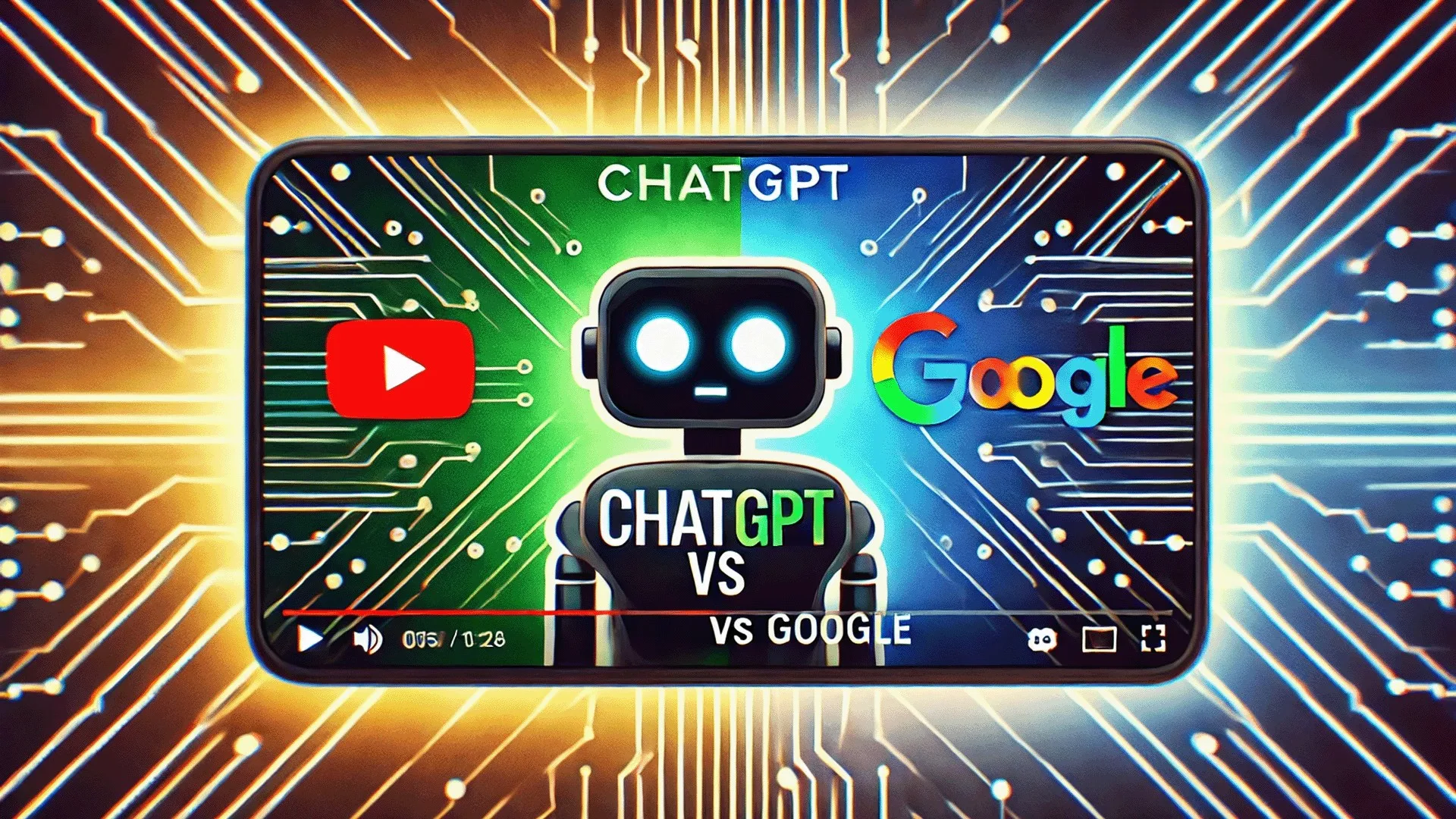In recent years, the way people seek information has evolved dramatically. A decade ago, the phrase "Google it" was synonymous with finding quick
In recent years, the way people seek information has evolved dramatically. A decade ago, the phrase “Google it” was synonymous with finding quick answers to almost any query. Today, as conversational AI like OpenAI’s ChatGPT gains widespread use, many people are skipping search engines in favor of more dynamic, interactive solutions. This trend raises a fascinating question: Can these AI chatbots actually boost human creativity, or are they simply another tool for straightforward information retrieval?
The Rise of AI as a Problem-Solving Companion
Think back to a time when you needed a quick idea for a dinner recipe or a new project at home. Previously, searching online meant combing through numerous websites and picking out the most relevant bits of information. With ChatGPT, however, users get customized, immediate answers that go beyond basic facts and delve into creative territory.
But does this mean ChatGPT can genuinely assist in generating creative ideas, or is it limited to reiterating information found across the web? Researchers like myself and Byung Lee have investigated this shift in how people interact with AI, examining whether these tools can effectively enhance human creativity compared to traditional search engines.
Experimenting with Creativity: ChatGPT vs. Google
In a groundbreaking study published in Nature Human Behaviour, we conducted a series of five experiments to measure how ChatGPT stacks up against Google and independent human thought in fostering creative problem-solving. Participants were assigned various creative tasks, such as brainstorming new uses for everyday items or designing an innovative piece of furniture. They were split into three groups: one used ChatGPT for assistance, another relied on Google, and the third worked alone.
The Creative Edge: ChatGPT’s Performance
The results were striking. Judges who were unaware of which tool participants used rated the ChatGPT-assisted solutions as more creative than those derived from Google or no assistance at all. This was especially evident in tasks that required combining unrelated concepts into cohesive ideas.
One example involved repurposing household items, such as turning a garden hose and an old tennis racket into a novel creation. Participants using ChatGPT proposed ideas that integrated utility and imagination, suggesting items like flexible, play-friendly structures that could be built and rebuilt in various ways. In comparison, Google searchers were more likely to present traditional or straightforward answers based on what already existed in blogs or articles.
How ChatGPT Excels in Creativity
Generating Incrementally Creative Ideas
ChatGPT’s key strength lies in its ability to suggest practical yet creative improvements on existing ideas. This is a form of “incremental creativity,” where an initial concept is refined or adapted in new ways. While ChatGPT is trained on vast amounts of data that allow it to identify and merge patterns, it’s particularly adept at helping users move from basic thoughts to more polished, innovative solutions.
For instance, in our toy-design experiment, participants using ChatGPT received suggestions that combined familiar objects in new configurations—like crafting a wind-powered paper boat from leftover parts. These ideas stood out not only for their ingenuity but also for their feasibility and potential to inspire further brainstorming.
Enhancing Conceptual Blending
Conceptual blending is the process of merging different concepts to form new ideas. ChatGPT’s algorithm, which identifies commonalities across various types of data, allows it to assist users in forming blended concepts. This capability was apparent in the experiment where users had to come up with ideas for unique dining tables. With ChatGPT, participants proposed tables that doubled as entertainment spaces with built-in puzzles or transformable sections—a step beyond what typical search results would yield.
Limitations of ChatGPT in Creative Tasks
While ChatGPT can provide a substantial creative boost, it isn’t without its limitations. The model’s creativity stems from pattern recognition and probabilistic output, meaning it tends to present the most likely coherent response based on its training. This can lead to innovative combinations, but rarely produces groundbreaking, never-before-seen ideas. ChatGPT is more effective at refining and expanding existing ideas rather than generating radical innovations.
Moreover, human oversight is critical when using AI for creativity. Although ChatGPT can suggest ideas that seem fresh, these suggestions may not be practical or scalable without expert human input. Areas requiring extensive feasibility studies, prototyping, or empathy-based design still rely on human insight to move from concept to execution.
Send emails, automate marketing, monetize content – in one place
Caution with Bias and Sensitivity
Another concern involves potential biases present in ChatGPT’s training data. For tasks involving sensitive topics or cultural nuances, ChatGPT may inadvertently reflect biases or fail to provide culturally appropriate ideas. Users should be vigilant and ensure that AI-generated content is screened for appropriateness, particularly when dealing with issues related to race, gender, or complex social dynamics.
Surprising Strengths: Emotional and Empathetic Tasks
One of the most unexpected findings from our study was ChatGPT’s ability to assist with tasks that seem to require empathy. Participants working on projects that involved repurposing cherished items into keepsakes found ChatGPT’s suggestions thoughtful and relevant. This challenged the assumption that AI lacks the capacity to contribute meaningfully to emotionally driven tasks.
In one experiment, a participant tasked with turning an old family quilt into a modern decorative item received an idea from ChatGPT to create patchwork wall art framed with a sentimental story attached. This response highlighted how the AI could suggest ways to infuse creativity with emotional resonance, even if it didn’t fully understand the context in a human way.
Future Implications: How AI Can Partner in Creativity
With the increasing accessibility of AI tools like ChatGPT, the potential for enhanced creative tasks grows. In professional settings, this could translate to more efficient brainstorming sessions and collaborative work where teams use AI as a sounding board for ideas. For personal projects, AI can help individuals overcome creative blocks, suggesting directions they might not have considered.
However, it’s essential to view these tools as complements rather than replacements. While AI can augment the creative process, the innate human capacity for abstract thinking, intuition, and radical leaps of imagination remains unmatched.
Industries Poised for AI Creativity Integration
Several industries stand to benefit from the integration of AI in creative processes:
- Marketing and Advertising: AI can suggest campaign ideas and promotional tactics that integrate trending concepts with novel approaches.
- Product Design: From early brainstorming to refining prototypes, AI can offer unique takes on product features and user experience improvements.
- Content Creation: Writers and artists can use AI as an idea generator, helping them explore themes or narrative angles.
- Education: Teachers can use AI to craft creative lesson plans or problem-solving exercises that encourage students to think outside the box.
From Googling to ChatGPT: A New Paradigm in Problem-Solving
The shift from searching on Google to asking ChatGPT signifies more than just a new search method; it embodies a change in how people collaborate with technology to generate ideas and solve problems. While traditional search engines still play an essential role in providing comprehensive information and sources, AI chatbots like ChatGPT are creating a more interactive, idea-driven experience.
Balancing AI and Human Input
The most successful creative endeavors using AI will likely be those that balance the strengths of machine learning with the distinctive qualities of human thought. In workplaces that encourage innovation, using ChatGPT to develop initial ideas or refine existing concepts can be a game-changer. For individuals, the tool serves as a partner that can stimulate creative thinking and provide new perspectives, albeit with the understanding that it is a starting point, not a final authority.
Conclusion: The Promise and Limits of AI in Creativity
ChatGPT and similar AI tools have shown that they can indeed foster human creativity, offering practical, innovative solutions that enhance problem-solving. The main takeaway is that while AI can provide creative inspiration and refine concepts, true breakthrough ideas still require the intuitive leaps, emotional intelligence, and nuanced understanding that only humans possess.
The future of creativity will likely be a collaborative one, where AI tools are used alongside human ingenuity to push the boundaries of what’s possible. Embracing this partnership can lead to more robust, imaginative, and effective creative work in all fields, from personal projects to large-scale industry innovations.
Send emails, automate marketing, monetize content – in one place


